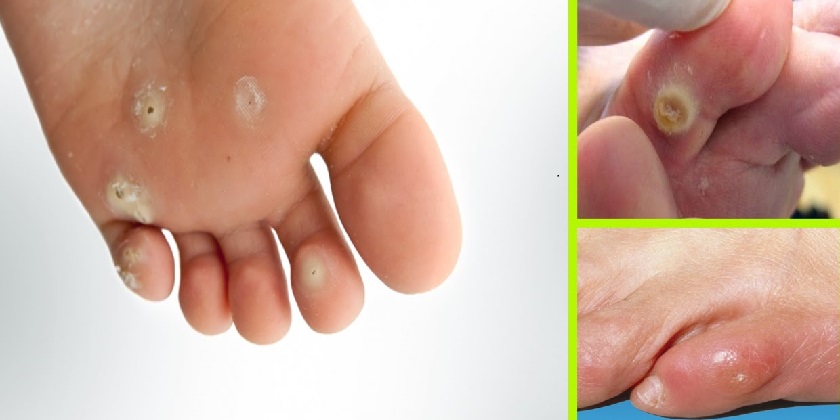- Home
- Corn Removal

How is the treatment done?
Corns or calluses are hardened and thickened skin that develops in a small area which receives continuous pressure or friction. The skin hardening occurs in response to this continuous pressure or friction to protect the lower softer layers. A small area of tissue underneath the hardened portion of the skin called the bursa remains inflamed and increases the lifespan of the corn. Corns usually develop on the hands and feet, including fingers and toes, mostly in people who do a lot of walking and/or manual labour, and in those wearing ill fitted shoes.
The most prominent cause of corn formation is ill fitted, or old and worn out shoes. When the entire foot is encased by a shoe, pressure develops against bone formations on the foot and toes. Improper support in ill fitting or worn out shoes causes this pressure to harden the skin to a corn. Corns also develop in those who regularly walk long distances or stand for a long time without breaks. Corns on the palms and fingers are very common in manual labourers who make heavy use of a number of tools like hammers, spades, scythes, etc. Friction from these tools causes the formation of corns. Corns may also develop in certain cases where a foreign body like a thorn, prickle, etc. goes in and gets stuck in the skin and the pressure from it causes a corn to form.
Mostly, corns disappear slowly once the cause of the pressure is removed. So a change of shoes will usually cure the corn. Other treatment methods include ointments, medicated plasters, or surgery.
Who is eligible for the treatment? (When is the treatment done?)
The easiest cure for corns is to remove the factor applying pressure on the skin. So changing ill fitted or worn out shoes usually makes the corn go away soon. Topical ointments are available that may be applied directly on the corn to soften them so that they can be removed easily. Medicated adhesive pads with a felt ring can be purchased. Commonly called Corn Caps, the ring ensures the medicine stays concentrated on the corn directly. It causes a small blister to form, which heals and falls off along with the corn itself.
If the corn is too painful or does not go away easily, surgical methods are available to remove them. Under a local anesthesia, they may be removed with surgical tools like scalpels, high frequency lasers, or cauterized by Radiofrequency. Cryotreatment may also be an option. Surgery is also performed to realign the underlying bones causing the pressure.
Who is not eligible for the treatment?
Corns form in people who have a continuous pressure or friction on their feet and hands for extended periods of time. Those wearing ill fitted, old, or worn out shoes for prolonged periods of time are eligible for treatment. People who walk long distances regularly or keep standing for long periods of time may develop corns and are eligible for treatment. Manual labourers, farmers, mechanics, etc. who use heavy tools with their hands regularly may develop corns on their hands and are eligible for treatment.
Are there any side effects?
Corns usually go away by themselves if the cause of the pressure is removed. Hence those who change their shoes regularly, like professional athletes, do not need treatment for corn removal. People who do not have a regular pressure pattern on their feet, and the pressure or friction are only for a short time, are not eligible for treatment for corn removal.

